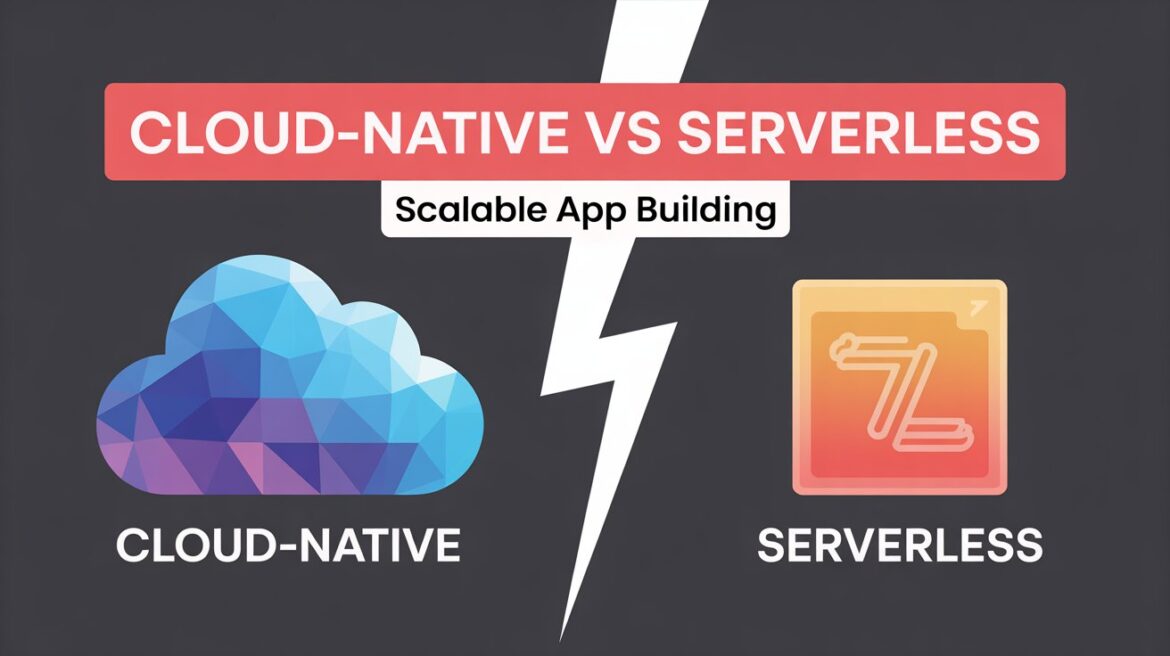In the ever-evolving landscape of modern application development, two architectural approaches have risen to prominence: cloud-native and serverless computing. After two decades in the trenches of software architecture and development, I’ve watched these paradigms reshape how we build, deploy, and scale applications. Today, I’ll unpack the nuances of both approaches and help you determine which might better serve your scalability needs.
The Evolution of Application Architecture
Remember when we were all racking physical servers in climate-controlled rooms? Those days feel almost quaint now. The journey from on-premise infrastructure to today’s abstracted computing models reflects our industry’s relentless pursuit of efficiency, flexibility, and scalability.
Cloud-Native: The Containerized Revolution
Cloud-native architecture represents a comprehensive approach to building and running applications that fully exploits cloud computing capabilities. At its core lies containerization—packaging application code with dependencies for consistent deployment across environments.
Key Components of Cloud-Native
Containers: Lightweight, isolated environments that package code and dependencies, with Docker leading the charge.
Orchestration: Kubernetes has emerged as the de facto standard for managing containerized applications, handling deployment, scaling, and management.
Microservices: Breaking applications into independent, loosely coupled services that can be developed, deployed, and scaled independently.
Continuous Integration/Continuous Deployment: Automating the build, test, and deployment lifecycle.
Cloud-Native Scalability Advantages
Cloud-native approaches excel in their granular control over infrastructure. When building applications that require:
- Complex network configurations
- Specific hardware optimizations
- Precise control over computing resources
- Long-running processes
- Predictable, steady workloads
Cloud-native architectures provide the flexibility to fine-tune your scaling parameters. You maintain control over container instances, resource allocation, and scaling triggers while still benefiting from cloud infrastructure.
Serverless: The Ultimate Abstraction
Serverless computing takes abstraction to its logical conclusion by eliminating infrastructure management entirely. Despite the name, servers still exist—they’re just completely managed by the cloud provider.
Key Components of Serverless
Functions as a Service (FaaS): Code executed in stateless containers triggered by events (AWS Lambda, Azure Functions, Google Cloud Functions).
Backend as a Service (BaaS): Third-party services for common application functions like authentication, databases, and storage.
Event-driven architecture: Applications built around responding to events rather than maintaining continuous processes.
Serverless Scalability Advantages
Serverless truly shines when you need:
- Instant, automatic scaling to handle unpredictable traffic spikes
- Pay-per-execution pricing for cost efficiency during idle periods
- Rapid development and deployment cycles
- Focus on business logic rather than infrastructure concerns
- Event-driven processing
The promise is compelling: write code, deploy functions, and let the provider handle all scaling concerns automatically.
Making the Choice: Critical Considerations
After implementing both approaches for numerous clients across industries, I’ve identified several factors that should guide your decision:
Workload Patterns
Regular, predictable traffic: Cloud-native approaches often prove more cost-effective for stable workloads.
Spiky, unpredictable usage: Serverless excels with its ability to scale from zero to thousands of instances in seconds.
Cost Structure
Cloud-native typically involves paying for allocated resources regardless of utilization, while serverless follows a pure consumption model. For applications with extended idle periods, serverless can dramatically reduce costs.
Development Complexity
Serverless abstracts away infrastructure but introduces distributed computing challenges like managing state, handling cold starts, and working within provider constraints. Cloud-native requires more infrastructure knowledge but provides fewer platform limitations.
Vendor Lock-in
Cloud-native architectures using open-source technologies like Kubernetes offer greater portability between providers. Serverless architectures often leverage provider-specific services, potentially increasing dependency on a single vendor.
Hybrid Approaches: The Pragmatic Reality
In my experience, the most successful scalable applications often combine both paradigms. Critical, always-on components may use cloud-native architectures, while event-triggered, variable-load functions leverage serverless for cost efficiency and automatic scaling.
Consider a media processing application: core services run in containers while image processing functions operate as serverless components that scale independently during usage spikes.
The Future is Distributed
Whether you choose cloud-native, serverless, or a hybrid approach, distributed computing is now the foundation of scalable applications. Both approaches enable building resilient systems that can handle global scale, though through different mechanisms.
The key is understanding your application’s specific requirements rather than pursuing architectural purity. Scalability isn’t just about handling more users—it’s about doing so efficiently, reliably, and cost-effectively.
After decades of building scalable applications, I’ve learned that there’s rarely a perfect solution—only the right approach for your specific context and constraints. The choice between cloud-native and serverless isn’t binary but rather a spectrum of trade-offs that savvy architects navigate with careful consideration of their unique requirements.
What scalability challenges are you facing in your application development? I’d love to hear about your experiences in the comments below.
